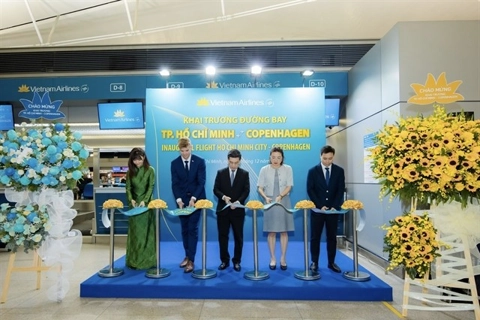Roadmap for Vietnam’s sustainable development goals until 2030
The roadmap, called the National Action Plan, demonstrates Vietnam’s determination to fulfill the millennium targets set by the United Nations for its sustainability.
The Government of Vietnam has issued a roadmap for the implementation of the 2030 Agenda for Sustainable Development Goals adopted by all United Nations member states in 2015.
| Vietnam strives to meet concrete criteria by the two main deadlines: 2025 and 2030. Photo: Truong Viet Hung/UNICEF |
Deputy Prime Minister Tran Hong Ha signed last weekend the decision on the roadmap titled the National Action Plan, which has a concrete implementation of 17 Sustainable Development Goals (SDGs) by 2030.
Accordingly, the roadmap has 117 criteria with some highlights, including the multi-dimensional poverty rate reduced by 1-1.5%/year; the rate of working groups covered by social insurance to be 60%; per capita income in rural areas 2.5-3 times higher than in 2020; GDP per capita US$7,500/each; exports growth at 5-6%/year in 2026-2030.
Related agencies and localities are asked to apply information technology and digitalization in the implementation and supervision to report the results by the two main deadlines: 2025 and 2030.
The Ministry of Planning and Investment is tasked with reporting the results to the Government and later to the National Assembly. Suitable criteria will be put into the annual socio-economic development plans.
Vietnam’s concrete targets
Under the UN 2030 Agenda, Vietnam’s sustainable development goals are defined as follows:
Goal 1: End poverty in all its forms everywhere.
Goal 2: Eradicate hunger, ensure food security, improve nutrition, and promote sustainable agricultural development.
Goal 3: Ensure a healthy life and enhance welfare for all citizens of all age groups.
Goal 4: Ensure quality, equitable, universal education and promote life-long learning opportunities for all.
Goal 5: Achieve gender equality; empower and create enabling opportunities for women and girls.
Goal 6: Ensure the adequate supply of and sustainable management of water resources and sanitation for all.
Goal 7: Ensure access to sustainable, reliable and affordable energy sources for all.
Goal 8: Ensure sustainable, inclusive, and sustained economic growth; and generate full and productive employment and decent work for all.
Goal 9: Build highly resilient infrastructure; promote inclusive and sustainable industrialization; foster innovation.
Goal 10: Reduce social inequalities.
Goal 11: Promote sustainable and resilient urban and rural development; ensure safe living and working environments; ensure reasonable population distribution and workforce by region.
Goal 12: Ensure sustainable production and consumption.
GOAL 13: Respond promptly and effectively to climate change and natural disasters.
Goal 14: Conserve and sustainably utilize the oceans, seas and marine resources for sustainable development.
Goal 15: Protect and sustainably develop forests; conserve biodiversity; develop eco-system services; combat desertification; prevent the degradation of and rehabilitate land resources.
Goal 16: Promote a peaceful, just, and equal society for sustainable development; ensure access to justice for all; develop effective, accountable and participatory institutions at all levels.
Goal 17: Strengthen the means of implementation and revitalize the Global Partnership for Sustainable Development.

.jpg)










